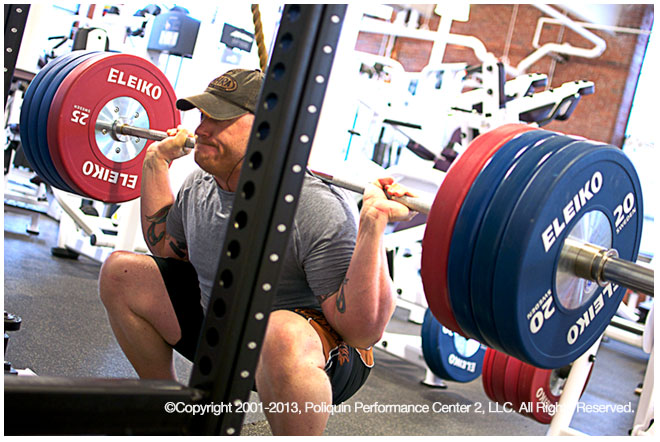
Increase your speed by doing a periodized front and back squat training program. Both short sprint and change of direction speed are vital for agility in soccer.
For example, change of direction speed allows you to fool opponents and recover the ball faster, which are vital tactical elements in soccer. A new German study performed on soccer players provides vital information on how to get faster, stronger, and quicker for optimal athletic performance.
Researchers had elite youth soccer players perform a 2-year strength training program in order to test the effect of lifting on the following performance markers:
• maximal front and back squat strength
• short sprint speed over 10, 20, and 30 meters
• acceleration and change of direction ability
The training program consisted of an initial 4 weeks of technique training, followed by repeated 8-week cycles in the following order of hypertrophy training (5 sets of 10 with 3 minutes rest), strength (5 sets of 6 with 3 minutes rest), and maximal strength (5 sets of 5 with 5 minutes rest) for the front squat, back squat, deadlift, neck press, bench press, row, and trunk exercises.
Results showed that compared to a control group of players who only did their regular soccer training, the players who strength trained significantly increased their sprint speed and their change of direction ability. They also gained a ton of strength in the lower body, increasing their squat 1RM dramatically.
The strength training group improved change of direction time by as much as 10 percent compared to a control group. There were high correlations between sprint speed and relative strength as measured by back squat 1RM relative to body mass.
The youth in this study were broken into three age groups (under 19, under 17, and under 15), and their performance was compared to adult professional players. This two years of planned training resulted in the under 19 group being faster than the professional athletes.
The research group writes that progressive strength training is so effective at increasing short sprint and change of direction speed for the following reasons:
1. A lengthy 2-year program leads to increased maximum strength, which has a greater degree of transfer to a complex task such as changing direction.
2. Improved acceleration, which is trained with the concentric phase of the squat, contributes to increased short speed and agility.
3. Gains in the ability to decelerate, due to training with a high eccentric load in the squat and deadlift, has a positive effect on faster sprint times.
4. Moderate to high correlations exist between eccentric and dynamic maximum strength.
5. It is suggested that youth can start training as early as age 6 or 7 to learn technique and progressively build strength and speed.
6. Starting early would facilitate the entry of a talented junior athlete to become a paid professional athlete.